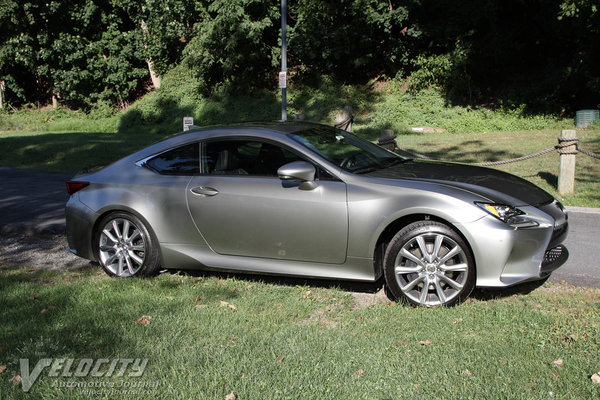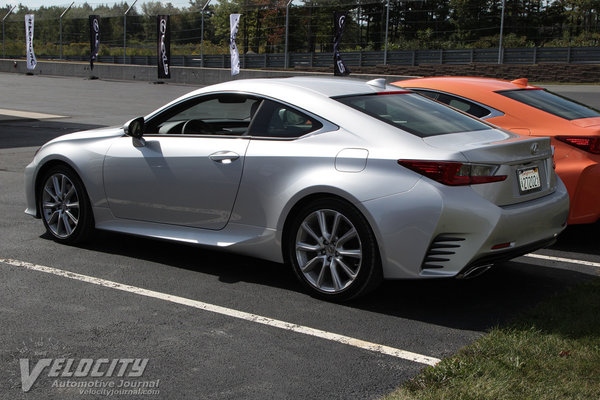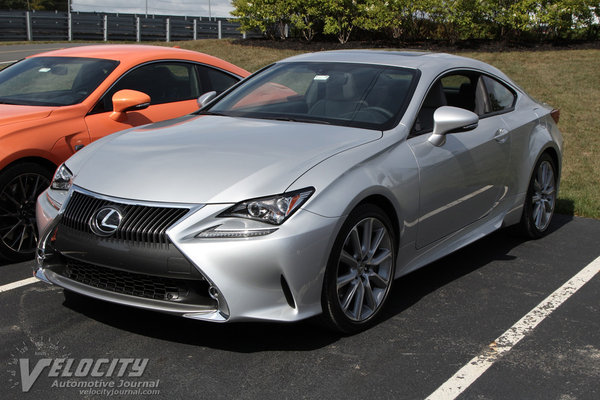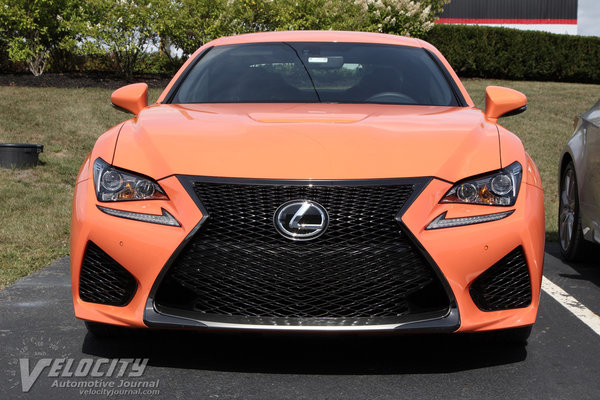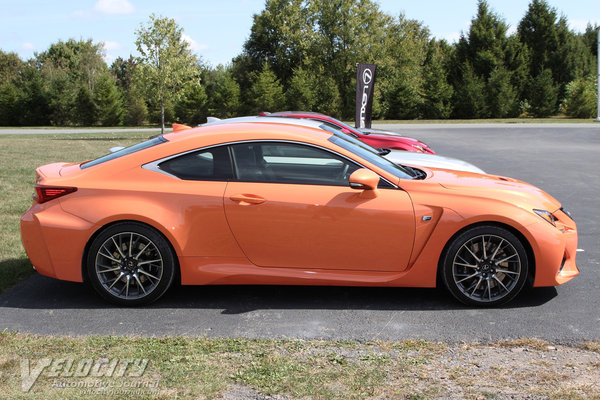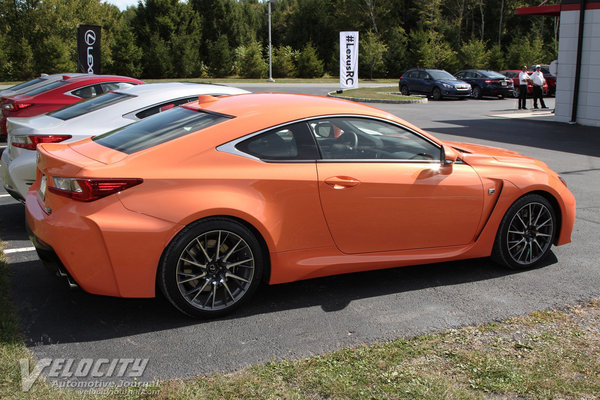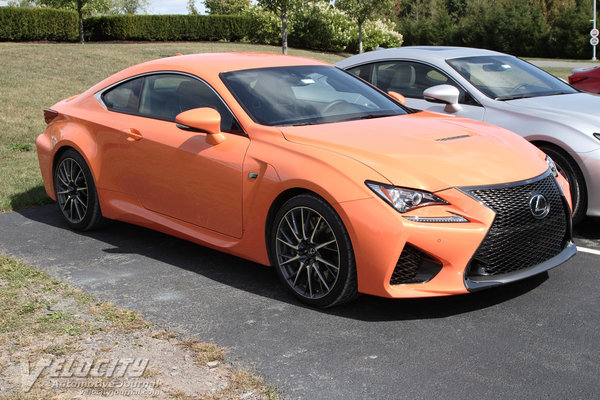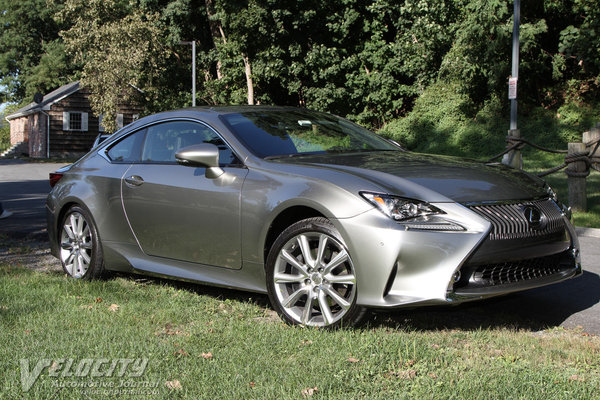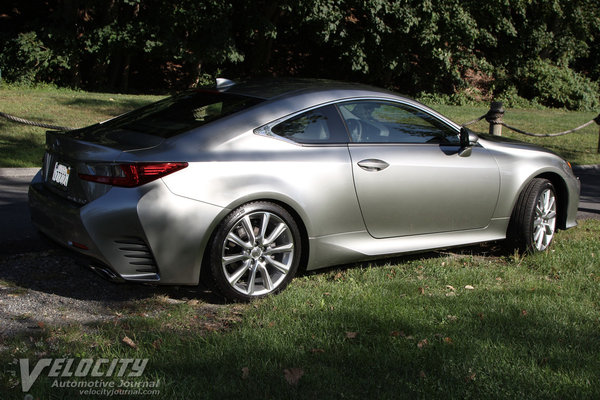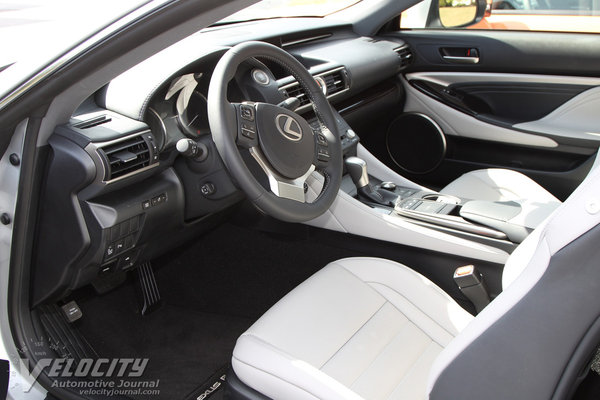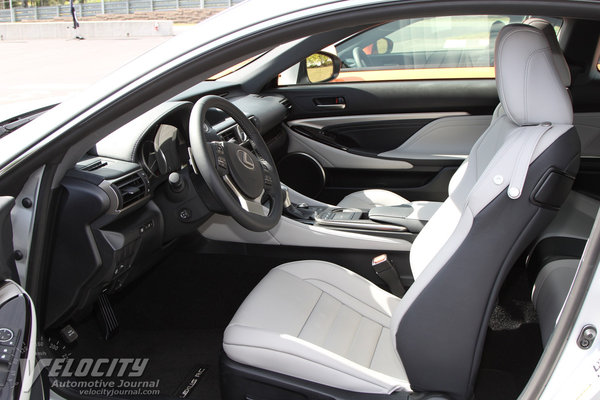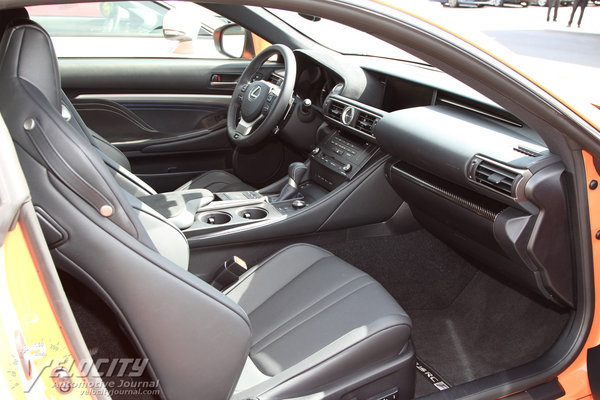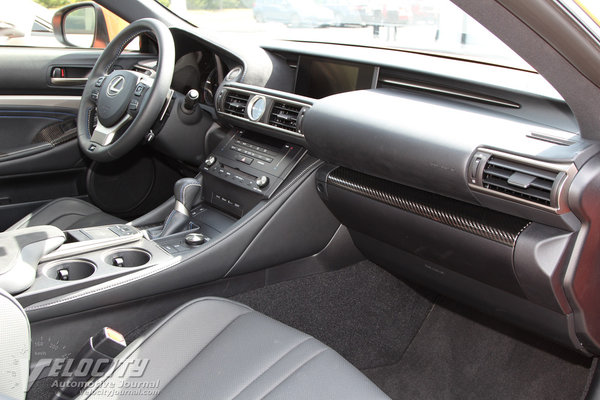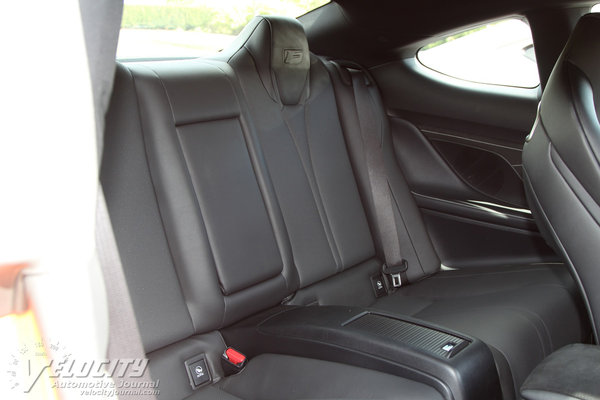2015 Lexus RC
09/23/2014
Shahed Hussain
The last time Lexus had a sporty coupe was in the late 1990s, when the 2-door SC300/400 was part of its lineup. Neither the SC430 nor the IS convertible that followed were really replacements for the SC hardtop coupes. So Lexus went back to its roots and to design a coupe offering both performance and luxury. Lexus is positioning the RC350 as a luxury coupe, with the F Sport package intended for customers preferring bolder styling and sharper handling. The RC F is the performance flagship in the Lexus lineup, intended to compete against the BMW M4 and Audi S5.
Lexus priced the RC350 starting from $42,790, while the top range RC F is $62,400. All-wheel drive is optional on the RC350. The RC350 shares a 306-bhp/277 lb.-ft. 3.5L V-6 with the IS sedan, but RC F gets the 5.0L V-8 rated at an impressive 467-bhp. An 8-speed automatic is standard on all rear-drive RC models, but an all-wheel drive RC substitutes a 6-speed automatic instead. No manual transmission is offered, as Lexus expects inadequate customer demand to make homologation cost-effective.
Although the RC shares structural design elements with the IS sedan, IS convertible and GS sedan, its platform is essentially unique. The RC suspension consists of double wishbones in front and a multi-link rear layout. Coil springs, dampers, and stabilizer bars are designed and tuned specifically for the RC. The RC350 gets all-season Michelin MXM4 tires on 18-inch or optional 19-inch diameter alloy wheels. An all-disc setup with 13.15-in. diameter discs is standard. Opting for the F Sport package substitutes unique 19-inch alloy wheels and larger 14.06-in. diameter discs. The RC F is shod with Pilot Super Sport (255/35R19 front, 275/35R19 rear) on 19-inch diameter alloy wheels. Instead of temporary spare, the RC F substitutes a flat tire repair kit. Steering is via an electric-assist rack-and-pinion system.
An optional F Sport package adds adaptive variable suspension and rear wheel steering to the RC350. The F Sport also includes a Variable Gear Ratio Steering (VGRS) system that adjusts steering ratio depending on speed and steering angle. The RC F gets a standard Torsen limited-slip rear differential, or an optional Torque Vectoring Differential (TVD) that distributes torque via electric motor-driven multi-plate clutches. The TVD has three settings: Standard, Slalom, and Track. During our track laps in a TVD-equipped RC F, we selected the recommended Track mode via a center console button.
The RC interior closely resembles the IS sedan, although there are some differences. The RC350 has conventional dual gauges for the tachometer and speedometer. The F Sport gets configurable LCD backlit instrument panel with virtual meter displays, while the RC F gets a cluster with both analog and virtual gauges. The gated shifter for the 8-speed automatic includes a manual mode, or alternatively paddles behind the steering wheel can control shifting. Twisting the drive mode knob selects between Eco, Normal, Sport, and Sport+ settings. On public roads, the Normal or Sport modes are preferred, but Sport+ holds the transmission in gear until redline, making this mode suited for winding roads. We did note that the Sport+ mode will upshift at redline even in mid-curve, an undesirable trait. Manual shifting will likely contribute to faster lap times, but during our short stint at the track we left gear selection to the transmission software.
Lexus tuned the RC350 for a comfortable ride on less than perfect roads, in keeping with its mission as the volume model in the RC lineup. The Michelin MXM4 tires provide reasonable turn-in response, considering their all-season rating. Mild understeer ensures that the RC350 offers decent handling without becoming a handful. Decent steering feel and moderate effort make the RC350 easy to pilot on an extended road trip. Engine, wind and tire noise are minimal at highway speeds. The V-6 has enough power to push the chassis limits, but not enough to intimidate the average driver.
The RC F is a different animal. On unblemished pavement, the suspension has just enough compliance to take the edge off the occasional bump and undulation. The 5.0L V-8 will readily send the RC F sideways when the stability control is set to Sport+, so we wisely left the electronic safety devices engaged. Around tight curves on the racetrack, the RC F exhibited more understeer than the RC350, but then we were decelerating from higher velocities in the RC F, so our limited seat time with this speedy Lexus may have contributed to the perception of increased understeer.
Both the RC350 and RC F provide Lexus with credible alternatives to the BMW 4-Series, Audi A5/S5, and Infiniti Q60. The RC350 is a nicely balanced coupe that should appeal to customers new to the luxury coupe segment, and may peel off a few buyers from the German competition. Although each RC model has unique appeal, we think that the RC350 with the F Sport package strikes the right balance between performance and price. Power-obsessed enthusiasts will not settle for anything less than the RC F.

